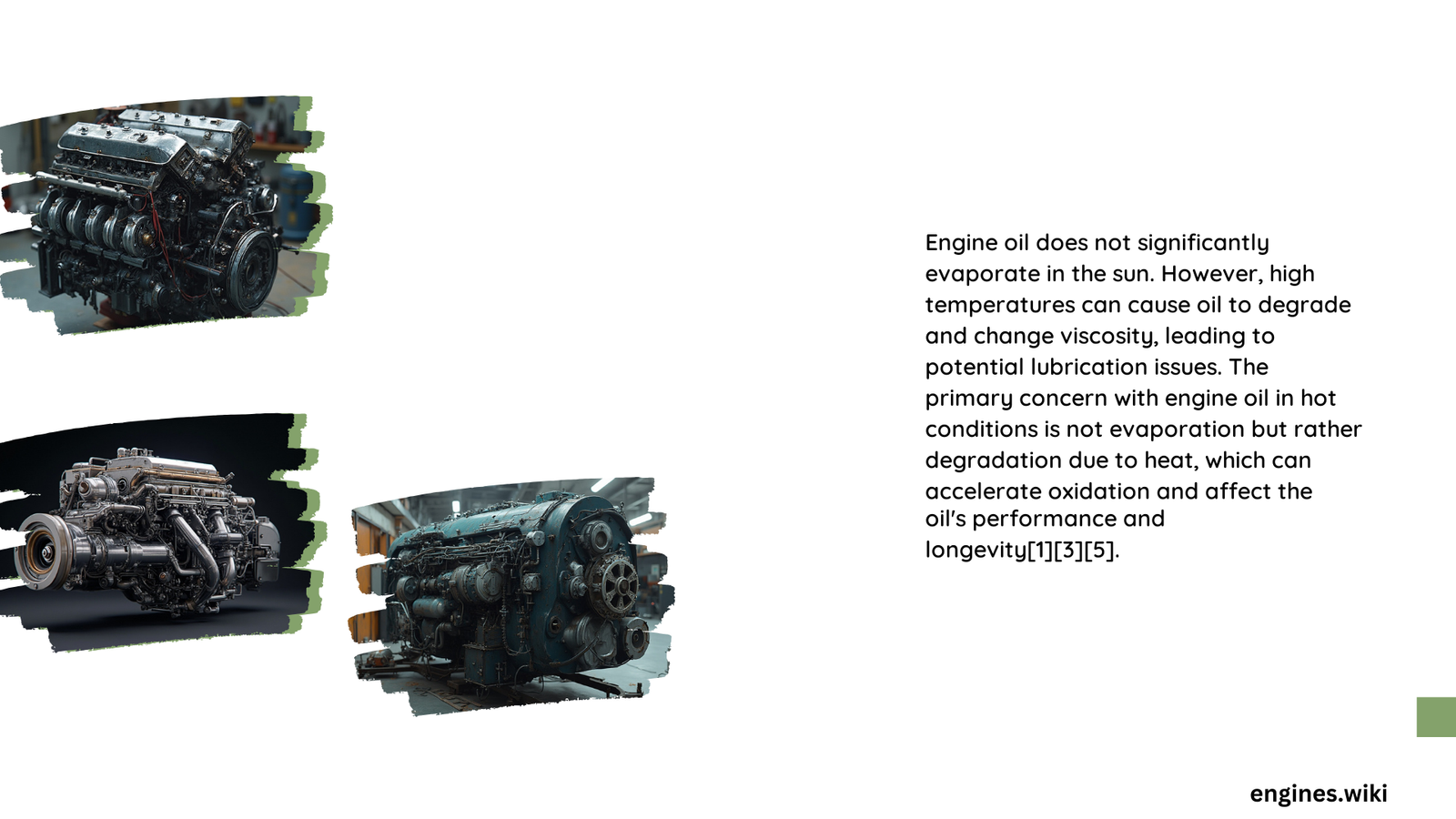Engine oil can indeed evaporate when exposed to direct sunlight, with temperature, chemical composition, and duration playing critical roles in the process. High temperatures accelerate molecular breakdown, causing lighter hydrocarbons to escape, which impacts oil viscosity, lubrication properties, and overall engine performance. Understanding these mechanisms helps vehicle owners protect their engines and maintain optimal oil quality.
What Causes Engine Oil to Evaporate in Sunlight?
Engine oil evaporation is a complex phenomenon influenced by multiple environmental and chemical factors. The process involves molecular transformation and volatility characteristics that determine how quickly oil loses its essential properties.
How Does Temperature Impact Oil Evaporation?
Temperature plays a pivotal role in engine oil evaporation. Key observations include:
- Critical Temperature Thresholds:
- Below 100°C: Minimal evaporation
- Above 100°C: Significant molecular breakdown
- 250°C: Noack volatility test standard for measuring evaporation
| Temperature Range | Evaporation Impact |
|---|---|
| 30-40°C | Moderate Evaporation |
| 100-150°C | High Evaporation Risk |
| 200-250°C | Extreme Molecular Breakdown |
What Chemical Factors Contribute to Oil Evaporation?
Different oil compositions respond uniquely to heat and sunlight exposure:
- Conventional Oils
- Higher lighter hydrocarbon content
- More susceptible to evaporation
-
Faster molecular degradation
-
Synthetic Oils
- Refined molecular structure
- Lower volatility
- Enhanced heat resistance
Can UV Exposure Accelerate Oil Degradation?
While UV rays contribute to oil breakdown, thermal degradation remains the primary evaporation mechanism. Ultraviolet radiation can:
- Initiate oxidation processes
- Accelerate chemical bond disruption
- Contribute to molecular instability
What Happens to Engine Oil During Extended Sun Exposure?
Prolonged sunlight exposure triggers several critical changes:
- Viscosity Increase: Lighter molecules evaporate first
- Performance Reduction: Lubrication properties diminish
- Chemical Composition Alteration: Remaining oil becomes thicker
How Can Vehicle Owners Prevent Excessive Oil Evaporation?
Practical strategies include:
- Park vehicles in shaded areas
- Use high-quality synthetic oils
- Regularly check oil levels
- Maintain proper engine cooling systems
- Avoid prolonged exposure to extreme temperatures
Technical Insights: Measuring Oil Evaporation

The Noack volatility test (ASTM D-5800) provides standardized measurements:
– Test temperature: 250°C
– Maximum acceptable evaporation: 15% by weight
– Helps determine oil quality and stability
Conclusion
Understanding engine oil evaporation requires comprehensive knowledge of thermal dynamics, chemical composition, and environmental factors. Vehicle owners must remain proactive in monitoring oil conditions and selecting appropriate lubricants.
